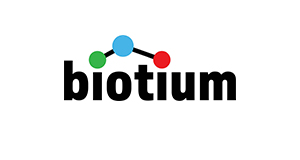CD3e (T-Cell Marker)(rC3e/1308), CF740 conjugate, 0.1mg/mL
CD3e (T-Cell Marker)(rC3e/1308), CF740 conjugate, 0.1mg/mL
Artikelnummer
BTMBNC743631-500
Verpackungseinheit
500 uL
Hersteller
Biotium
Verfügbarkeit:
wird geladen...
Preis wird geladen...
Description: Recognizes the epsilon-chain of CD3, which consists of five different polypeptide chains (designated as gamma, delta, epsilon, zeta, and eta) with MW ranging from 16-28 kDa. The CD3 complex is closely associated at the lymphocyte cell surface with the T cell antigen receptor (TCR). Reportedly, CD3 complex is involved in signal transduction to the T cell interior following antigen recognition. The CD3 antigen is first detectable in early thymocytes and probably represents one of the earliest signs of commitment to the T cell lineage. In cortical thymocytes, CD3 is predominantly intra-cytoplasmic. However, in medullary thymocytes, it appears on the T cell surface. CD3 antigen is a highly specific marker for T cells, and is present in majority of T cell neoplasms.Primary antibodies are available purified, or with a selection of fluorescent CF® Dyes and other labels. CF® Dyes offer exceptional brightness and photostability. Note: Conjugates of blue fluorescent dyes like CF®405S and CF®405M are not recommended for detecting low abundance targets, because blue dyes have lower fluorescence and can give higher non-specific background than other dye colors.
Conjugate: CF740
Concentration: 0.1 mg/mL
Storage buffer: PBS, 0.1% rBSA, 0.05% azide
Product Origin: Animal
Clone: rC3e/1308
Immunogen: Recombinant full-length human CD3E protein
Antibody Reactivity: CD3e
Entrez Gene ID: 916
Z-Antibody Applications: IHC, FFPE (verified)
Verified AB Applications: IHC (FFPE) (verified)
Antibody Application Notes: Not recommended for flow cytometry/Immunohistology (formalin) 1-2 ug/mL/Staining of formalin-fixed tissues requires boiling tissue sections in 10 mM citrate buffer, pH 6.0, for 10-20 min followed by cooling at RT for 20 min/Western blotting 1-2 ug/mL/Immunofluorescence 1-2 ug/mL/Optimal dilution for a specific application should be determined by user
Conjugate: CF740
Concentration: 0.1 mg/mL
Storage buffer: PBS, 0.1% rBSA, 0.05% azide
Product Origin: Animal
Clone: rC3e/1308
Immunogen: Recombinant full-length human CD3E protein
Antibody Reactivity: CD3e
Entrez Gene ID: 916
Z-Antibody Applications: IHC, FFPE (verified)
Verified AB Applications: IHC (FFPE) (verified)
Antibody Application Notes: Not recommended for flow cytometry/Immunohistology (formalin) 1-2 ug/mL/Staining of formalin-fixed tissues requires boiling tissue sections in 10 mM citrate buffer, pH 6.0, for 10-20 min followed by cooling at RT for 20 min/Western blotting 1-2 ug/mL/Immunofluorescence 1-2 ug/mL/Optimal dilution for a specific application should be determined by user
| Artikelnummer | BTMBNC743631-500 |
|---|---|
| Hersteller | Biotium |
| Hersteller Artikelnummer | BNC743631-500 |
| Verpackungseinheit | 500 uL |
| Mengeneinheit | STK |
| Reaktivität | Human |
| Klonalität | Recombinant |
| Methode | Immunohistochemistry |
| Isotyp | IgG1 kappa |
| Wirt | Mouse |
| Konjugat | Conjugated, CF740 |
| Produktinformation (PDF) |
|
| MSDS (PDF) | Download |

 English
English







